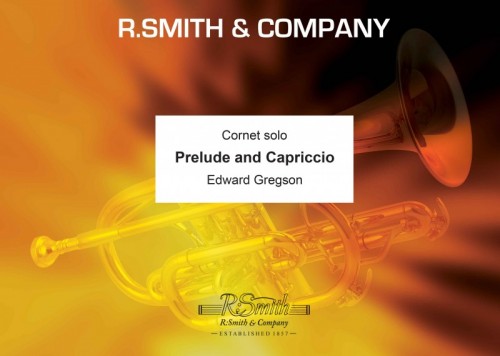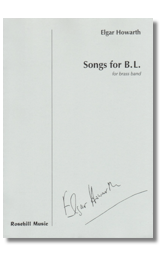Results
-
 £74.95
£74.95CELTIC SUITE (Brass Band - Score and Parts) - Sparke, Philip
2012 Belgian National Championships - 2nd Section. Duration 12.45 Includes: Fanfare and Dawns Werin (Folk Dance); Suo-Gan (Lullaby); Men of Harlech) Recorded on Polyphonic QPRL089D Harmony Music
Estimated dispatch 7-14 working days
-
 £37.95
£37.95CELTIC SUITE (Brass Band - Score only) - Sparke, Philip
2012 Belgian National Championships - 2nd Section. Duration 12.45 Includes: Fanfare and Dawns Werin (Folk Dance); Suo-Gan (Lullaby); Men of Harlech) Recorded on Polyphonic QPRL089D Harmony Music
Estimated dispatch 7-14 working days
-
 £37.95
£37.95JUBILEE PRELUDE (Brass Band) - Sparke, Philip
Duration: 4:49 Recorded on Polyphonic QPRL089D Harmony Music
Estimated dispatch 7-14 working days
-
 £37.95
£37.95RIVER CITY SERENADE (Brass Band) - Sparke, Philip
Duration: 4:42 Recorded on Polyphonic QPRL089D Harmony Music, QPRL045D Making Tracks
Estimated dispatch 7-14 working days
-
 £37.95
£37.95SERENADE FOR TONI (Brass Band) - Sparke, Philip
Duration: 5:55 Recorded on Polyphonic QPRL089D Harmony Music
Estimated dispatch 7-14 working days
-
 £42.95
£42.95SOLILOQUY (Trumpet or Cornet/Brass Band) - Sparke, Philip
Duration: 4:56. Recorded on Polyphonic QPRL089D Harmony Music
Estimated dispatch 7-14 working days
-
 £69.95
£69.95SWISS FESTIVAL OVERTURE (Brass Band - Score and Parts) - Sparke, Philip
Duration: 9:11 Recorded on Polyphonic QPRL089D Harmony Music
Estimated dispatch 7-14 working days
-
 £32.95
£32.95SWISS FESTIVAL OVERTURE (Brass Band - Score only) - Sparke, Philip
Duration: 9:11 Recorded on Polyphonic QPRL089D Harmony Music
Estimated dispatch 7-14 working days
-
 £24.95
£24.95Prelude and Capriccio (Cornet Solo with Brass Band) - Gregson, Edward
A condensed score is included with this workGregson wrote his Prelude and Capriccio in 1972. It exists in two versions: one for cornet and band and the other for cornet or trumpet and piano.The work began life in the early sixties, the Capriccio being composed when the composer was 17. A Prelude was added to complete the work, which lasts for approximately 8 minutes. The Prelude is reflective in character and uses long melodic lines over undulating chromatic harmony. The music reaches a climax before a brief reprise of the opening. The Capriccio is somewhat jazzy in its opening syncopated rhythms, but has a more lyrical middle section before a finale exploiting the virtuoso character of the instrument.
Estimated dispatch 7-14 working days
-
 £44.00
£44.00Songs for B.L. (Score only) - Elgar Howarth
Songs for B.L. was commissioned by BBC North for the 1995 BBC Festival of Brass and first performed by the Eikanger/Bjorsvik Musiklag Band in February that year. It was selected as the championship section test-piece for the 1995 National Brass Band Championships of Great Britain. The piece is in seven sections: Romanza; First Scherzo; Ballad; March; Second Scherzo; Romanza reprise; Coda. It is romantic but charged with highly chromatic harmony, and makes much use of chamber music textures. The work is dedicated to the composer's wife, Mary. 'The meaning of the title,' says the composer, 'is a secret, and will remain so'.
Estimated dispatch 7-9 working days
